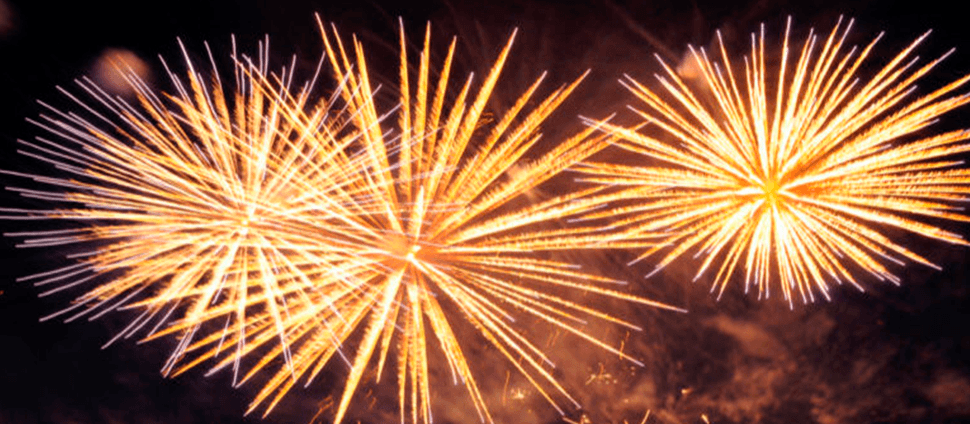Author: Shopify API
Author: Louise Dickens | 3rd November 2017
Canada Day is a magical annual event in the Canadian calendar filled with fireworks, sparklers and celebrations that last all night.
There’s something special about huddling up with friends and family, and watching a beautiful firework display to wrap up the day.
Which is why over the weekend, we can expect every social media feed to be crammed full of firework-related photos. Some good, some not-so-good.
Avoid blurry, dark and underwhelming photos this year by following the tips below (don’t forget to tag us in your photos on Facebook, Twitter and Instagram so we can see them!).
- ISO, Shutter Speed & Aperture
Even if you’re using a smartphone camera, understanding these important photography elements will help you to become a better photographer.

- Aperture: The hole within the lens where light passes through. This controls depth of field (the portion of a photo that appears in focus). If the aperture is large, only a small amount of the photo will appear in focus (that’s how photographers create the ‘blurred’ background effect).
- Shutter Speed: The length of time the aperture remains open for when taking a photo. Fast shutter speeds ‘freeze’ a moment in time in a crisp image. Slow shutter speeds show the movement in a photo (that’s how photographers create ‘light art’ photos).
- ISO: How sensitive your camera is to light. Increasing the ISO makes your camera more sensitive, allowing you to achieve higher shutter speeds. However, the higher the ISO the more noise/grain that will appear in your photo.
These 3 elements are the basis of all photography. For more detailed information about how these work together, check out this beginner’s guide.
- AVOID Flash
The flash on your phone/camera is only designed to illuminate objects a few meters away from you.
Instead, try utilizing the light sources around you. Silhouettes always look effective in low light scenarios. Alternatively, bring a torch as your own light source for particularly dark areas.

- Get a Good Spot
Location is really important. We tend to try and get as close to the action as possible, but that usually ends up with us craning our necks as we’re forced to look upwards at the fireworks, squashed within a crowd.
Think about different locations, where you can still admire the firework display in its entirety, but from a better perspective (this usually comes with the added bonus of being quieter, with no entry fees!).

- Use a Tripod
Taking photos of any moving object is always tricky, but fireworks have the added difficulty of bright lights at night time.

Stabilizing your phone/camera with a tripod is a great place to start. So whether you’re taking quick-shutter photos (freezing the action) or arty slow-shutter shots, you won’t have any blur from shaky hands.
- AVOID Digital Zoom
Digital zoom, especially on smartphones, is usually a bad idea.
The camera doesn’t actually get any closer to the subject, it just works as a magnifying glass to blow the image up. This just creates blurry, distorted photos that don’t look very good. It’s better to get closer to the subject, if possible.
This is not to be confused with optical zoom, where the lens actually moves closer to the subject.

- Out of the Box Thinking
Don’t take the same boring photo as everyone else. You know which one I mean – a blurred, out-of-focus shot of a firework in the sky above your head.
Instead, try to think creatively about what photos you could take using different angles, compositions and props.
This will really help your photos to stand out among everyone else’s.

- Use an App/Better Camera
If you’re using a smartphone, consider using an app that gives you more control over the shutter, aperture and ISO.
Manual and Snapseed offer users more control than the in-built camera function.

Or, if you’re really serious about improving your photography, invest in a decent camera (Fujifilm’s X-Series cameras are compact, stylish and powerful, the X-A10 is ideal for beginners).
- Edit Afterwards
Always keep your photos, no matter how bad they look originally, because you might be able to ‘save’ them with some post-editing.

Editing, also known as post-processing, an image can completely transform the end result. Night-time photography is often dark, but more often than not the details are still caught – the image just needs to be brightened so we can see them.
Even simple edits like filters and making a photo black and white can vastly improve a ‘bad’ photo. Although not all photos can be ‘saved’ through editing, it’s worth a shot before simply deleting the image.


